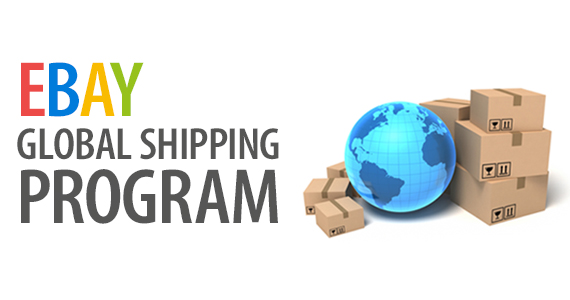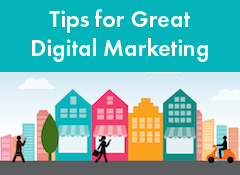
Forget
about spinning articles and directory listings. If you want to
effectively market your business online, you need to become an expert at
networking with others in your niche.
But there’s a problem: Inboxes have turned into out-of-control
monsters. People are increasingly being ambushed with unwanted messages,
and they’re getting less timid about hitting the delete key when faced
with unsolicited emails. Often, you have only a few seconds to make a
good impression.
So how can you rise above the din? The recipient of your email will
ask (perhaps subconsciously) three questions about you when deciding how
to respond.
I’ll admit these questions are a bit judgmental. That doesn’t mean
someone whose emails aren’t up to snuff deserves to be shunned
electronically. It just means you need to be aware of how your emails
sound to recipients who are forced to make snap judgments in order to
prioritize their overflowing inboxes.
So if you want to increase your chances of getting a response from a complete stranger, make sure you pass these three tests:
Question #1 – Can You Write Well?
It may sound harsh, but most people don’t write very well. So when a
well-composed outreach email comes across my inbox, I immediately take
notice. Why? Because I assume someone who can write well is also
smart, ambitious and worth investing the time to connect with.
I can’t think of anything more intimidating than trying to write a
blog post on how to write well. The topic merits its own book or even
library. But here are a few things to keep in mind:
Get the Basics Right
It goes without saying, but punctuation, grammar, spelling – all of
these are really important. Brush up on the correct usage of then/than,
they’re/their/there, it’s/its, your/you’re and
all of these commonly misused words.
I realize I sound like an overly pedantic eight-grade English teacher,
but most of the people you’re trying to connect with to help grow your
business will notice these kinds of things – good or bad.
Be Anal About Proofreading
You only get one chance to make a first impression, so don’t botch
it. Proofread your emails if you’re reaching out to an important
contact for the first time.
If you’re anything like me, you’ll re-read some of your drafts and
find egregious spelling mistakes, misused words and incoherent thoughts
in what you thought was a well-written first draft. So take the time to
double- or even triple-check your work. (Pro tip: It helps to read your
message aloud. You’ll quickly hear the awkward parts.)
If you tend to read through your sent email looking for typos – and I KNOW others do this, too! – you’re on the right track.
Ditch Text Shorthand
Surprisingly, “lol” doesn’t exactly translate to “laughing out loud.”
In email speak, it means “please take my email much less seriously.”
Including half a dozen emoticons in your email has the same effect.
Think About Tone
Tone can be tricky to express with an email, given there’s no
face-to-face interaction. You want to be friendly and upbeat without
coming across as overbearing or unnaturally exuberant.
You can use exclamation points, but do so conservatively and only
after sentences that merit them. If you must use the smiley face (which
can sometimes be a way to lighten an otherwise serious sentence), make
sure you limit it to one per email.
Don’t Skimp on Capitalization
if you don’t capitalize when you should, i guarantee you will rarely
get replies. not capitalizing the beginning of your sentences simply
makes you look lazy. Don’t do it. Embrace that shift key.
Pick a Professional Email Address
If you’re still rocking your @juno.com email address from the ’90s,
it’s time for an upgrade. Anytime I see an email address for one of
these dated domains, I instantly think the person I’m corresponding with
isn’t too tech-savvy. It may not be a fair judgment, but given that I
have about 30 seconds to make the call, it’s the assumption I (and
others) settle on.
You should have an email address from @gmail.com, @outlook.com,
@yahoo.com or from a business domain. And make sure to keep it clean
with a variation of your first and/or last name. If I were using my old
high-school email address for outreach – bikeboy444@hotmail.com – I
doubt I’d get many replies.
A few other tips to follow
- Keep it short! If it’s more than 10 sentences, you’ve written too much. Six to seven is ideal.
- Don’t be overly personal. Bearing your soul to me in a first email is awkward and inappropriate.
- If your text color is anything other than black, change it back.
- Stick with a standard, professional font (i.e., no curlicues).
Again, I realize it’s nearly impossible to cover the fundamentals of
good writing with a few bullet points. It really is a life-long pursuit.
And much of this is as much related to formatting as to actual
writing. But these guidelines will go a long way toward making your
emails count.
You should be able to find loads of information about upping your writing game, including this great piece from
Forbes. (And if all else fails, you can always marry a writer/editor. That’s what I did!)
Now that I’ve convinced you that I’m actually a cranky, 80-year-old
English curmudgeon, let’s move on to the second question your recipients
will ask.
Question #2 – What Do You Want?
If you’re writing an outreach email, you almost certainly want
something specific from the recipient. The problem is, what you’re
asking for is extremely valuable – that person’s time, attention or
their audience –and they don’t know you. Why should they spend their
finite resources to help you, a complete stranger?
That’s why the best approach isn’t to ask for anything. Instead,
make your goal just to start a conversation. If you’re a quality person
offering something of value, the option to work together will naturally
come up in subsequent emails. And it makes it much more likely someone
will reply to you if you don’t ask for anything up front.
I’d never interacted with Greg Ciotti from
HelpScout and
SparringMind when I received his first outreach email:
Hey Andrew,
Greg from Help Scout (and Sparring Mind) here. I’m one of the few
contributors to the Shopify blog along with yourself, and I’ve been
digging what you’ve been putting out lately!
This is just one of those emails where I reach out to somebody doing real stuff, heh. 
But seriously though, keep up the great work my man, looking
forward to what you come up with in 2013, and if you’d ever like to
collaborate, give me a holler.
–Greg
I’m guessing Greg’s goal in reaching out was to eventually get
HelpScout additional exposure via the eCommerceFuel brand. And yet,
there’s no hard pitch.
Instead Greg makes a connection, offers some praise of my work, tries
to genuinely connect with me and proposes an open-ended collaboration
opportunity that doesn’t require an immediate commitment.
And did you notice there was only one exclamation mark and one smiley face? Tone nirvana.
Like an expert hunter stalking his prey, Greg executed the cold
approach perfectly. Since then, I’ve recommended HelpScout.net (awesome
help desk software) to dozens of people and had Greg on the
eCommerceFuel podcast
to talk customer service. So I’d say his email did the trick.
Another great example from this week via Jeff from
SoloStove.com:
Hi Andrew!
I just wanted to tell you thanks for your podcast each week. I
listen all the time. You have great guests and good discussions. I
actually run my own ecommerce store that has been an awesome ride so
far. I’m no expert, but have some experience in the ecommerce world.
I would be happy to help you out if you ever have questions. Keep up the good work!
Jeff
Jeff’s email asked for nothing; he was simply writing to let me know
how much he enjoyed the podcast and even offered to lend his experience
to help out.
When I viewed his website,
SoloStove.com,
I was blown away by an impressive product and a beautifully executed
design. We started a discussion, and I’m hoping to have him on the
podcast in an upcoming episode. (Although he doesn’t even know it yet.
Jeff, I’ll be in touch!)
Did you notice the tone? An exclamation point in the header and one
in the body. Friendly, but not over the top. You may think I’m over
the top with my nitpicking, but these small things can make a big
difference in how an email is received.
Focus on building a rapport, and you’ll usually see long-term
benefits if you’re doing something worthwhile that can genuinely help
the other person.
If You Must Ask for Something …
If you have to ask for something in your initial email, make sure you do three things:
- Show you’ve spent time on their site
- Offer something that would be valuable to them and
- Close with an authority builder
Here’s the wrong way to begin an email:
Mike,
I’d like to write a guest post on your blog about scorpion-taming
kits. We sell dozens of scorpion cages on our store, and I know a lot
about them. All you’d need to do is give us a link back to our site and
we’d be happy to write this for you.
Thanks, Andrew
About the only thing this email has going for it is brevity. It
fails in just about all other aspects. Where’s the rapport building?
The offer that’s of interest to the site owner’s needs? And why should
they trust you (er, me)? Here’s a better example:
Mike,
First off, I absolutely love your site on scorpion taming –
really well done. Especially like the video you had on teaching them to
do backflips. Didn’t even know this was possible!
Writing because I noticed you don’t have any posts or articles
about scorpion cages. If it’s something that your readers would find
valuable, I’d be more than happy to write a unique, quality post for
your site. No commitments from your end – if you don’t think it’s
top-notch stuff, there’s no obligation to use it.
I’ve been selling scorpion cages online at AndrewsScorpionShack.com for the past four years, so we really know the industry. If you’d like to see some of the resources we’ve compiled, you can do that here.
If this isn’t a good fit for your visitors, not a problem. Appreciate the consideration and nice connecting!
- Andrew
Quite a difference, eh? A lead that shows I’ve actually spent some
time on his site and am not spamming him with a fill-in-the-name
outreach template. An offer for content that puts his visitors at the
center of the value proposition and gives him an “out” if the content is
low quality. And, finally, an authority-building bit at the end listing
my credentials and showcasing some of the top-notch work I’ve already
created.
As I said earlier, the best type of outreach email simply starts a
discussion. But if you’re going to pitch right out of the gates, make
sure your email focuses on their needs and not yours.
Question #3 – What Have You Done?
If you’re asking for something meaningful from the recipient, there’s
a cost (or risk) involved in them agreeing to it. Whether or not they
accept depends on how well you present yourself (how you write), your
offer (what you’re asking for) and your track record online.
The biggest indicator of future behavior is past performance, right?
So when evaluating requests – especially larger ones – people will
often do some sleuthing about you.
http://www.ecommercefuel.com/how-to-write-an-email/?utm_source=CustomerSure&utm_medium=link&utm_campaign=100%20blog%20list
 Your
store settings on Amazon are where you provide information to buyers
about your company. This is the place you can begin to develop a
relationship with Amazon buyers and gain their trust. Lets discuss four
areas that every Amazon Seller should update in the store settings:
Your
store settings on Amazon are where you provide information to buyers
about your company. This is the place you can begin to develop a
relationship with Amazon buyers and gain their trust. Lets discuss four
areas that every Amazon Seller should update in the store settings:







 Businesses
of all stripes are always looking for new customers to buy their
products or services. However, sometimes businesses ignore the best
place to look for new sales: through customers who have already
purchased products and services in the past. Tapping into your existing
customers to boost your sales is smart because you’ve already done the
hardest part of the sales cycle with them: you made that first sale.
Businesses
of all stripes are always looking for new customers to buy their
products or services. However, sometimes businesses ignore the best
place to look for new sales: through customers who have already
purchased products and services in the past. Tapping into your existing
customers to boost your sales is smart because you’ve already done the
hardest part of the sales cycle with them: you made that first sale. A man walks into a bar/restaurant/hotel/car repair shop. Chances are, he found it online. That’s because today’s consumers,
A man walks into a bar/restaurant/hotel/car repair shop. Chances are, he found it online. That’s because today’s consumers, 



 Forget
about spinning articles and directory listings. If you want to
effectively market your business online, you need to become an expert at
networking with others in your niche.
Forget
about spinning articles and directory listings. If you want to
effectively market your business online, you need to become an expert at
networking with others in your niche.